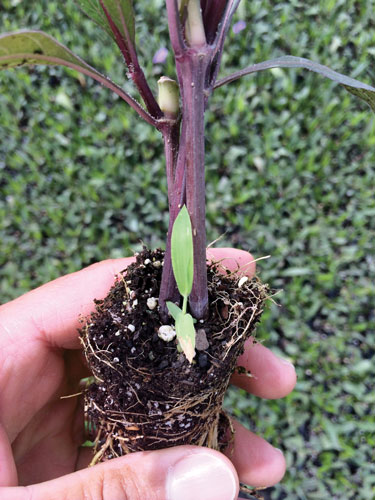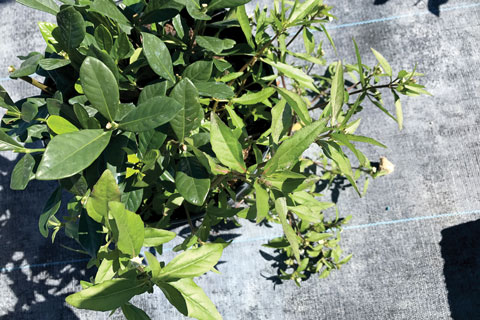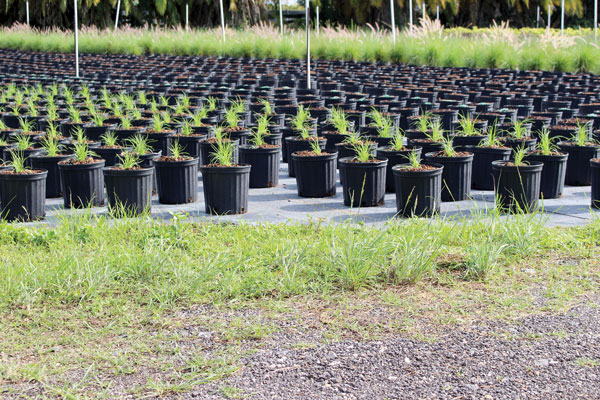9/1/2018
Avoiding a Second Round
Nelson Gonzalez
 Every grower can relate to a time when a bay of plants is inundated with weeds. This is usually when you gather the troops and set out to eradicate this grueling challenge with hand weeding. All growers are doomed to this fate if they don’t take the time to determine why the outbreak occurred in the first place and how best to remedy it. A strategic analysis of the circumstances will help you determine how to correct the situation and prevent it from happening again.
Every grower can relate to a time when a bay of plants is inundated with weeds. This is usually when you gather the troops and set out to eradicate this grueling challenge with hand weeding. All growers are doomed to this fate if they don’t take the time to determine why the outbreak occurred in the first place and how best to remedy it. A strategic analysis of the circumstances will help you determine how to correct the situation and prevent it from happening again.
Pictured: If liners are grown in-house, implement programs that reduce weed populations.
In a previous study, I found that plants overrun by weeds can take as much as 14 times longer to weed compared to plants containing an average of one to two weeds per plant. Competing with weeds for resources will also subject your plants to undue stress. As the saying goes, “The definition of insanity is doing the same thing over and over and expecting a different outcome.” The same holds true for weed control—if we continue to attack these outbreaks as we have in the past without success, we’ll continue to waste time, effort and money.
Why did the outbreak occur?
There are certain instances when the causes of a weed outbreak are clear—the nursery was hectic, everyone was busy with production or all hands were on deck to pull plants for pending orders. Basic things like shipping or planting can often absorb labor allocated towards weed control. Although these may seem like good reasons, in the long run, weed outbreaks will adversely affect your profits.
 Pictured: Weeds growing in a gardenia container.
Pictured: Weeds growing in a gardenia container.
Conversely, there may not be a clear explanation as to why an outbreak occurred. The plants were potted, pre-emergent herbicide was applied, and a couple of weeks later, there are weeds everywhere. This is when we need to dig deeper to determine why the outbreak occurred and what can be done to keep it from happening again.
A good place to start is by looking at the list below and determining if any of these steps were missed. Sometimes, all it takes is for one step to be overlooked.
• Are there surrounding areas where weed seeds could be coming from? This could include adjacent properties, unkept common areas, roadways, etc.
• Prior to planting, was the groundcover free from debris? This will help reduce the number of areas where weed seeds can germinate.
• Is the media from the previous planting?
• Were the liners used weed free? If the liners are grown in-house, implement programs that reduce weed populations. If liners are sourced, insist on a zero tolerance for weeds. Weeds in the plants during this stage of the production cycle are almost always certain to cause problems later.
• If pre-emergent herbicide was applied, was the equipment used to apply them properly calibrated? Be certain that all herbicides are applied uniformly and at the recommended label rate.
• Were the plants properly irrigated prior to applying pre-emergent herbicide to compact the media?
• Were the plants properly irrigated after the pre-emergent herbicide application was made to activate the
herbicide?
• Were the proper pre-emergent herbicides selected based on the weeds that are most prevalent in the greenhouse or nursery?
Once we’ve analyzed and determined what may have caused a weed outbreak, we should have a better understanding of what we need to improve upon to avoid this situation in the future.
What can be done?
Being in the midst of a weed outbreak can seem overwhelming as you try to determine how to effectively remedy the problem. Now is the time to implement a weed-scouting program. The process should begin by mapping out the nursery and assigning a dedicated scout to determine which areas have the highest level of weed pressure. These areas should be the first in which weeds and dead plants are removed. Removing weeds from these high-priority areas will reduce the amount of seeds being released into the environment, making control that much easier.
 Pictured: Weeds in areas around the growing area provide a higher chance of weeds getting into your finished containers.
Pictured: Weeds in areas around the growing area provide a higher chance of weeds getting into your finished containers.
You should also consider having a team dedicated to weed control. Having several teams will allow you to rotate them and help avoid worker fatigue. By having a plan and sticking to it, the problem areas will eventually disappear.
After the initial weeding is complete, an application of pre-emergent herbicide may be advisable, depending on the plant variety being grown. Because heavy weeding can cause the media to become unsettled, it may be best to irrigate the plants prior to application of the herbicide to compact the media in the container. Approximately two weeks later, it may be necessary to weed the plants a second time to remove the smaller weeds that were missed during the first round. It may also be necessary to continue to weed these plants every two weeks until the weed population has subsided.
During the process of removing newly emerged weeds, try to disturb the media as little as possible. Doing so will allow the herbicide chemical barrier to stay intact and prevent future seeds from germinating. Finally, continue to make herbicide applications as recommended on the label and you’ll eventually achieve control over your weed dilemma.
Being faced with a challenging weed outbreak is something that no grower wants to deal with, but it’s how we handle these situations and learn from our mistakes that help us improve ourselves and our processes. GT
Nelson Gonzalez is Territory/Key Account Manager and Digital Media Lead for ICLSF Americas.